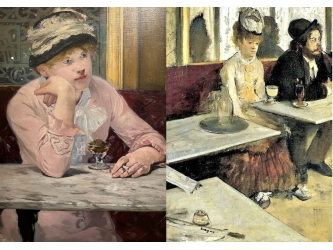There was a very short window of opportunity to visit the Countryside , the future exhibition at the Guggenheim in New York last February, thanks to Covid.
The show, which is more theoretical than aesthetic and is overseen by the Dutch architect Rem Koolhaas, will reopen on 3 October. For our American readers – who make up the majority of the readership of the JBH Reports website – but also for the many among you who will not have the intellectual pleasure of being able to visit this great landmark exhibition, here is the report once again, featuring a video interview with the maestro…
Malevich
I remember a conference where the architect Rem Koolhaas (born in 1944) spoke about his work spoke about his work and that of his firm OMA (which stands for the Office for Metropolitan Architecture) on the restructuring of the display of the fabulous collections at the Hermitage Museum in Saint Petersburg.
Soviet vibe
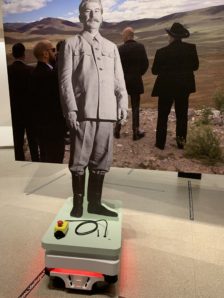
Coutryside, The Future
He began his speech by talking and presenting next to one of the most famous paintings in the history of twentieth-century art, “Black Square” by Kazimir Malevich, in a setting that seemed inhospitable to say the least. Near some dusty venetian blinds that had a distinctly Soviet vibe, in front of the painting embodying all that is radical, there was a cord hung between two metal stands, in that old school style designed to “protect” the artwork.
Powerful experience
But for Rem Koolhaas, as he said that day, it was one of the most powerful experiences he’d had while standing in front of a work of art.
White cube model
He stressed the fact that the white Cube model we all know so well, which has become the norm for displaying art, is in fact far from ideal.
Paradoxical thinking

Rem Koolhaas, Samir Bantal
All this to say that the famous, now-legendary architect is a great proponent of paradoxical thinking. His system of thought is such that he consistently takes stances you don’t expect. In this sense Koolhaas has always stood out (see the report about the Lafayette anticipations building that he designed in Paris).
Venice Architecture Biennale
Remember, for instance, when he was the director of the Venice Architecture Biennale in 2014, and where rather than paying homage to the grandiose aspects of the architectural discipline he chose to dedicate a large part of his show to elements considered to be trivial, like toilets, corridors and balconies.
In the ruins
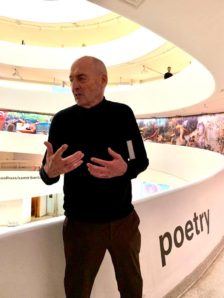
Rem Koolhaas
Perhaps it was during his childhood spent among ruins – he was born in Rotterdam in 1944 and stayed until he was 8– that he acquired his taste for the unexpected.
Indonesia
Most likely it was from his childhood spent abroad – he lived in Indonesia between the ages of 8 and 12, his father was a journalist – that he acquired his boundless curiosity for countries other than the western, democratic kind.
Major landmarks
Rem Koolhaas and his teams have constructed buildings that will go down as major landmarks, like the Chinese television headquarters in Beijing, and the libraries in Seattle and Doha.
Countryside, the future
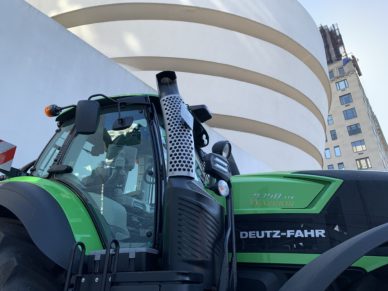
But these days, and for the past ten years or so, his mind has been elsewhere. Remaining faithful to his train of thought, which takes him where no one else tends to look, his new focus of interest is the countryside. “Countryside, The Future” is also the title of the mega-exhibition currently dedicated to him at the Guggenheim in New York.
Troy Conrad Therrien
The curator of the Guggenheim show, Troy Conrad Therrien, explains why they decided to stage an exhibition on the architect.
Not an architecture exhibition

The show, which in reality is neither an art exhibition nor an architecture exhibition, is – at the very least – surprising.
Impressive experience
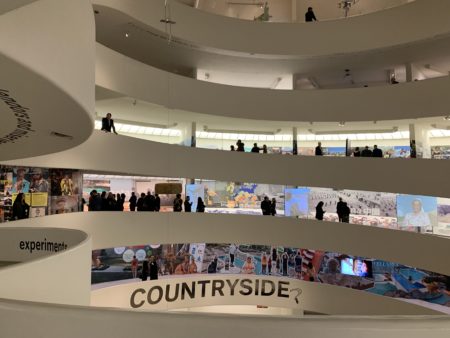
It could be described as an impressive experience. While it encapsulates something absolutely fascinating, it also contains absolutely no artworks. Except for the overall process, which could be said to be a work in itself.
Encyclopaedic journey

More specifically, it is an encyclopaedic journey through a proliferation of images and words arranged around certain themes, or how the countryside, which could be referred to as the non-city, has been transforming across space and time.
A team of 180 people
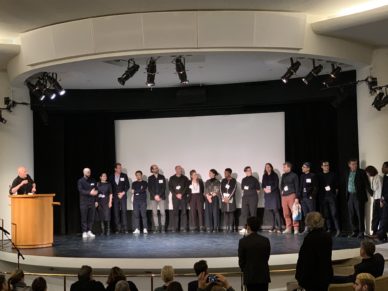
Countryside, The future, Curatorial team
The sheer volume of information to take in – Rem and Samir Bantal, director of AMO, the Koolhaas organization’s think tank, collaborated with almost 180 people, including Harvard students, over nearly five years – is huge.
Nevada industrial area
We move from Hitler and Mao’s fascination with the countryside, to an ultra-modern industrial area in Nevada where in the middle of the barren landscape there are gigantic warehouses used by American companies that have been built exclusively to house robots.
Volkswagen solar tractors
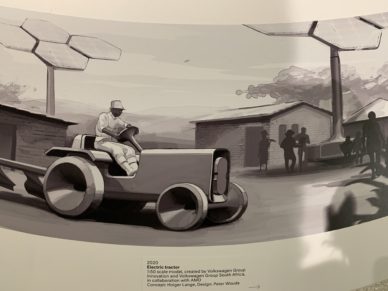
We see how Volkswagen has developed prototypes for very simple solar-powered tractors in Rwanda, which can be transformed into ambulances in villages.
Marie Antoinette’s strawberries
But in a whole other vein we can also observe Marie Antoinette’s countryside madness with her famous “Queen’s Hamlet” at Versailles, where she and her friends would amuse themselves watching sheep being milked as scenery and eating strawberries cleaned on the bush by servants before they were consumed.
Sterilized cultivation under plastic
We’re left dumbfounded by the very contemporary microclimates constructed using technology which enable a sterilized and compartmentalized form of cultivation under plastic kept at a constant temperature.
Flood of questions
Rem Koolhaas advances a flood of questions, he writes them down to the extent that they even cover entire walls, without offering any solutions for the natural world as a victim of gentrification, technology, and general disinterest.
Gorillas identifying with humans

We encounter a new kind of natural world designed to be a destination for a second home, or what looks like a wild jungle at the heart of which there are gorillas who are now habituated to tourists and starting to identify with humans.
Niklas Maak
Member of the curatorial team, Niklas Maak talks about the new psychology of gorillas:
No moral lesson
This green heritage may be the flipside of urbanization, capitalism and technology, but Koolhaas’s team – remarkably – doesn’t offer any moral lesson. The exhibition is designed to raise questions. Within the current American context it is beneficial to open up new fields of exploration.
No Art
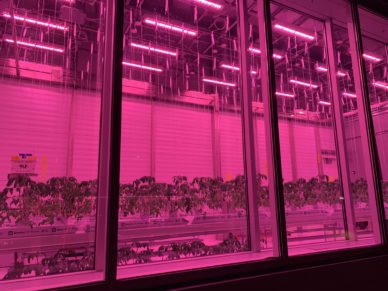
That said, the fact that it doesn’t contain a single artwork leads us to question its usefulness within a museum, even if it means the authority of what’s on display is reinforced.
The non-countryside
Lastly, would the street (situated in the non-countryside) not have been a more appropriate setting for this display?
Effectiveness of words
We might also question the effectiveness, given the age we live in, of such a vast quantity of words written on walls. Samir Bantal responds to this question.
Koolhaas. Countryside. A report. By AMO and Rem Koolhaas. 352 pages. 20 euros. Taschen.
Support independent news on art.
Your contribution : Make a monthly commitment to support JB Reports or a one off contribution as and when you feel like it. Choose the option that suits you best.
Need to cancel a recurring donation? Please go here.
The donation is considered to be a subscription for a fee set by the donor and for a duration also set by the donor.




